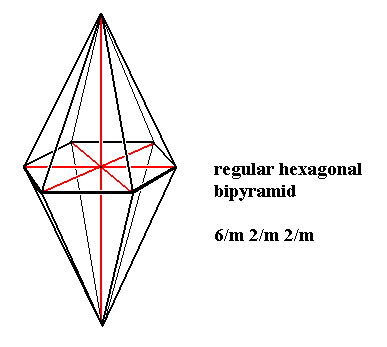
Dihexagonal-bipyramidal Class, 6/m 2/m 2/m
The geometric solid taken (according to the above established criteria) to represent the stereometric basic form (promorph) of all the crystals of this Class is the Hexagonal Bipyramid (Figure 1).
This body is a regular 6-fold bipyramid.
The promorph is accordingly that of the Polypleura dodecapleura (Stauraxonia homopola isostaura) (By clicking the link you will get to the Isostaura polypleura. Some species of them are enumerated and pictured, among which the six-fold bipyramid (Figure 19), the basic form of the Polypleura dodecapleura (not mentioned by name there)).

Figure 1. A regular six-fold bipyramid, the Stereometric Basic Form of the crystals of the Dihexagonal-bipyramidal Class of the Hexagonal Crystal System.
The equatorial plane is a regular hexagon.
Dihexagonal-pyramidal Class, 6 m m
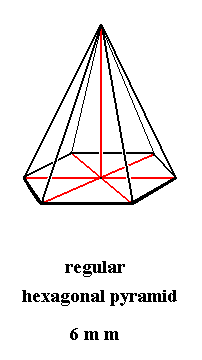
Figure 2. A regular six-fold pyramid, the Stereometric Basic Form of the crystals of the Dihexagonal-pyramidal Class of the Hexagonal Crystal System.
The base of the pyramid is a regular hexagon.
Hexagonal-bipyramidal Class, 6/m
In the next Figure we indicate, by means of the equatorial plane, how to construct a six-fold gyroid bipyramid, as the basic form of the Isosigmostaura sextamera (Stauraxonia homopola sigmostaura).
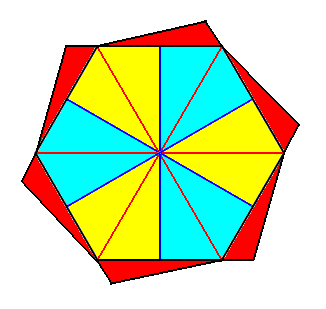
Figure 3. Construction of a regular six-fold gyroid bipyramid by means of adaptation of the equatorial plane of a regular six-fold bipyramid. Attachment of the red parts, as indicated in the Figure, causes the elimination of the mirror lines inherent in a regular hexagon. For the bipyramid this means the disappearance of all vertical mirror planes, i.e. mirror planes containing the main axis. The 6-fold rotation axis, though, remains.
The next Figure depicts the bipyramid, finally resulting from this construction.
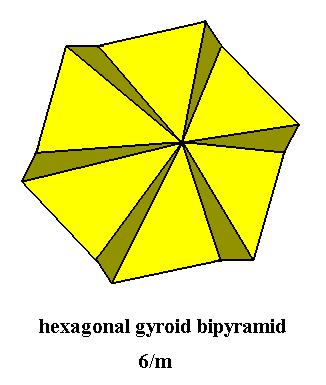
Figure 4. Regular Hexagonal (i.e. six-fold) Gyroid Bipyramid, Stereometric Basic Form of the (single) crystals of the Hexagonal-bipyramidal Class of the Hexagonal Crystal System. Because of the view direction the lower pyramid is not visible.
Hexagonal-pyramidal Class, 6
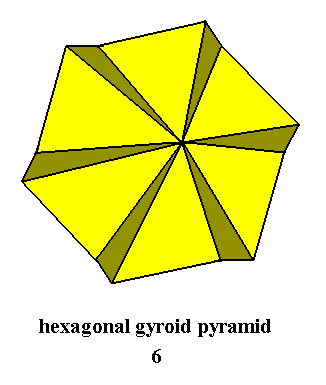
Figure 5. Regular Hexagonal (i.e. six-fold) Gyroid Pyramid, Stereometric Basic Form of the (single) crystals of the Hexagonal-pyramidal Class of the Hexagonal Crystal System.
Hexagonal-trapezohedric Class, 6 2 2
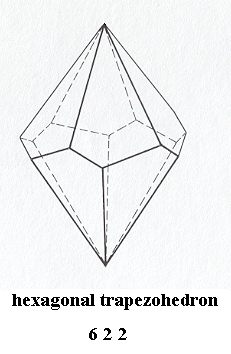
Figure 6. Hexagonal Trapezohedron, Stereometric Basic Form of the (single) crystals of the Hexagonal-trapezohedric Class of the Hexagonal Crystal System.
( After HURLBUT, C. & KLEIN, C., 1977, Manual of Mineralogy )
Ditrigonal-scalenohedric Class, 3* 2/m
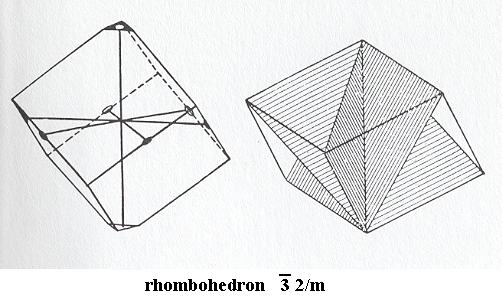
Figure 7. Rhombohedron, Stereometric Basic Form of the (single) crystals of the Ditrigonal_scalenohedric Class of the Hexagonal Crystal System.
Left image : Rotational axes indicated. Small triangle with hole : 3-fold rotoinversion axis. Small oval : 2-fold rotation axis.
Right image : Position of mirror planes.
( After HURLBUT, C. & KLEIN, C., 1977, Manual of Mineralogy )
Trigonal-rhombohedric Class, 3*
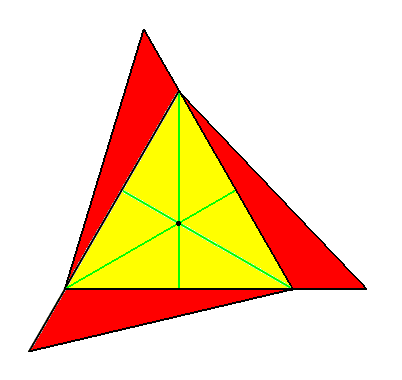
Figure 8. Construction of one of the (equal) bases of the Trigonal Gyroid Twisted Apical Bipyramid, from the base of a regular trigonal pyramid. The 3-fold rotation axis is in the center of the depicted form, as indicated.
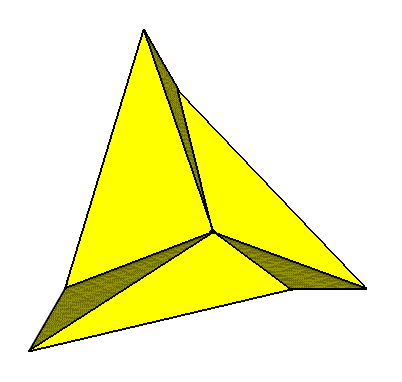
Figure 9. Slightly oblique top view of a trigonal (3-fold) gyroid pyramid. The final geometric solid to be constructed, the Trigonal Gyroid Twisted Apical Bipyramid, consists of two such pyramids, connected to each other by their tips and rotated 600 with respect to each other.
By means of superimposing two bases of 3-fold gyroid pyramids, combined with a rotation by 600 of one such base with respect to the other, we illustrate the construction of the Trigonal Gyroid Twisted Apical Bipyramid :
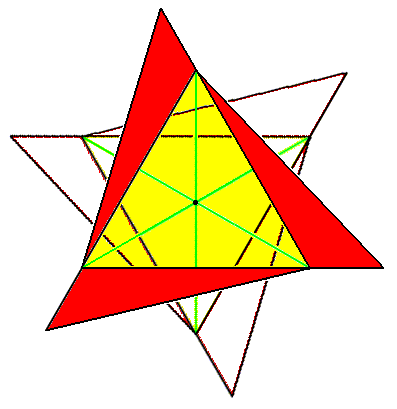
Figure 10. Superposition and rotation (600) of two bases of trigonal pyramids, in order to construct the Trigonal Gyroid Twisted Apical Bipyramid.
The next Figure, finally, gives the Trigonal Gyroid Twisted Apical Bipyramid. It is the Stereometric Basic Form of all the (single) crystals of the Trigonal-rhombohedric Class of the Hexagonal Crystal System. I.e. it is the geometric solid (body) that geometrically depicts the symmetry of that Class, which here means the possession of a 3-fold rotoinversion axis as its only symmetry element.
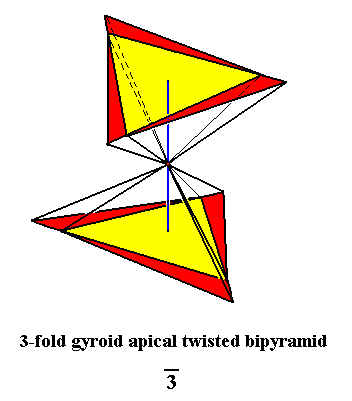
Figure 11. The Trigonal Gyroid Twisted Apical Bipyramid, the Stereometric Basic Form of all the (single) crystals of the Trigonal-rhombohedric Class of the Hexagonal Crystal System.
The symmetry of the just depicted gyroid bipyramid can be further illustrated by the following diagram representing the 3-fold rotoinversion symmetry.
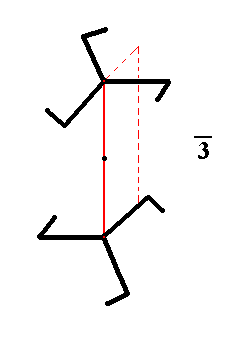
Figure 11a. The Symmetry of the Trigonal Gyroid Twisted Apical Bipyramid (Figure 11) diagrammed.
Ditrigonal-bipyramidal Class, 6* m 2
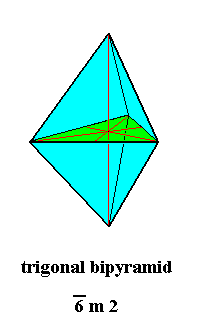
Figure 12. Trigonal Bipyramid, Stereometric Basic Form of the (single) crystals of the Ditrigonal_bipyramidal Class of the Hexagonal Crystal System.
Ditrigonal-pyramidal Class, 3 m
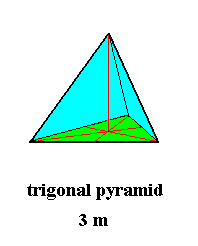
Figure 13. Trigonal Pyramid, Stereometric Basic Form of the (single) crystals of the Ditrigonal-pyramidal Class of the Hexagonal Crystal System.
Trigonal-bipyramidal Class, 6*
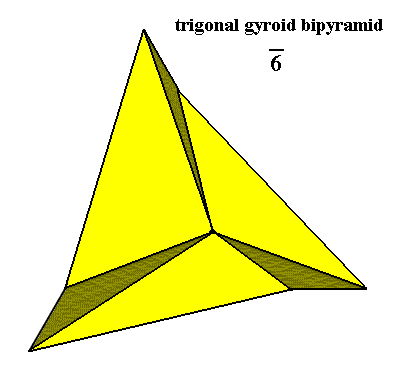
Figure 14. Slightly oblique top view of a Trigonal (3-fold) Gyroid Bipyramid, Stereometric Basic Form of the (single) crystals of the Trigonal-bipyramidal Class of the Hexagonal Crystal System. The lower pyramid is not visible but is present. The only mirror plane present is the equatorial plane connecting the two constituent pyramids.
The symmetry of the just depicted bipyramid can be diagrammed as follows :
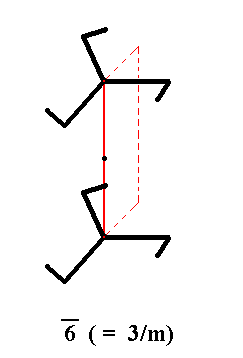
Figure 14a. Diagrammatic representation of the 6-fold rotoinversion symmetry of the gyroid bipyramid of Figure 14. This symmetry is identical to 3/m symmetry, which means a 3-fold rotation axis perpendicular to a mirror plane.
Trigonal-pyramidal Class, 3
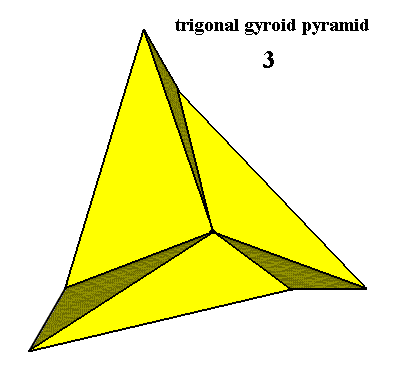
Figure 15. Slightly oblique top view of a Trigonal (3-fold) Gyroid Pyramid, Stereometric Basic Form of the (single) crystals of the Trigonal-pyramidal Class of the Hexagonal Crystal System. The only symmetry element present is a 3-fold rotation axis. There are no mirror planes.
Trigonal-trapezohedric Class, 3 2
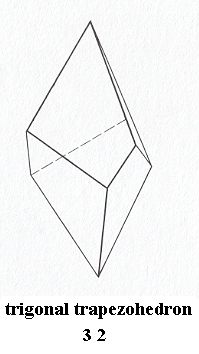
Figure 16. Trigonal Trapezohedron, Stereometric Basic Form of the (single) crystals of the Trigonal-trapezohedric Class of the Hexagonal Crystal System. There are no mirror planes.
( After HURLBUT, C. & KLEIN, C., 1977, Manual of Mineralogy )
To continue click HERE to proceed with the third part of the Promorphology of Crystals.
e-mail :

back to retrospect and continuation page
back to Internal Structure of 3-D Crystals
back to The Shapes of 3-D Crystals
back to The Thermodynamics of Crystals
back to Introduction to Promorphology
back to Anaxonia, Homaxonia, Polyaxonia
back to Protaxonia : Monaxonia
back to Stauraxonia heteropola
back to Homostaura anisopola, Heterostaura
back to Autopola oxystaura and orthostaura
back to Allopola (introduction)
back to Allopola amphipleura and zygopleura
back to the Basic Forms of Cells I
back to the Basic Forms of Cells II
back to the Basic Forms of Organs
back to the Basic Forms of Antimers
back to the Basic Forms of Metamers
back to the Basic Forms of Persons
back to the Basic Forms of Colonies
back to the first Part of the Preparation to the Promorphology of Crystals
back to the second Part of the Preparation to the Promorphology of Crystals
back to the third Part of the Preparation to the Promorphology of Crystals
back to the fourth part of the Preparation to the Promorphology of Crystals
back to the fifth part of the Preparation to the Promorphology of Crystals
back to the sixth part of the Preparation to the Promorphology of Crystals
back to the seventh part of the Preparation to the Promorphology of Crystals
back to the eighth part of the Preparation to the Promorphology of Crystals
back to the ninth part of the Preparation to the Promorphology of Crystals
back to the tenth part of the Preparation to the Promorphology of Crystals
back to the eleventh part of the Preparation to the Promorphology of Crystals
back to the twelfth part of the Preparation to the Promorphology of Crystals
back to the thirteenth part of the Preparation to the Promorphology of Crystals
back to the fourteenth part of the Preparation to the Promorphology of Crystals
back to the fifteenth part of the Preparation to the Promorphology of Crystals
back to the sixteenth part of the Preparation to the Promorphology of Crystals
back to the seveneenth part of the Preparation to the Promorphology of Crystals
back to the first part of the Preparation to the Promorphology of 3-D Crystals
back to the second part of the Preparation to the Promorphology of 3-D Crystals
back to the third part of the Preparation to the Promorphology of 3-D Crystals
back to the fourth part of the Preparation to the Promorphology of 3-D Crystals
back to the fifth part of the Preparation to the Promorphology of 3-D Crystals
back to the first part of The Promorphology of Crystals